
Sunday, October 29, 2006
Life Drawing Sunday XIII: Boo!
I found only one drawing that was even remotely related to the subject of Halloween, an editorial cartoon by Charles Sykes. Eighty-four years later it couldn't be more timely, though a looming punkin'-head doesn't even begin to capture the monstrosity that is the 109th Congress.

Charles Sykes, November 9, 1922

Sunday, October 15, 2006
Life Drawing Sunday XII: J.M. Flagg's "Why They Married"
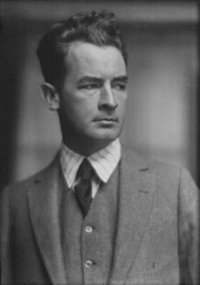 |
These drawings are all from 1906. I'm assuming that Flagg wrote the verse also. I don't know how many issues this series ran in. I wish I had more of them.
UPDATE, 8/30/08: Google Books has a copy of Flagg's "Why They Married" available for download in PDF. Unfortunately, they did an inexcusably crappy job with some of the scanning.
Further UPDATE: Project Guttenberg has a better version here.
Yet more UPDATE, 10/3/11: Another drawing in this series uploaded.

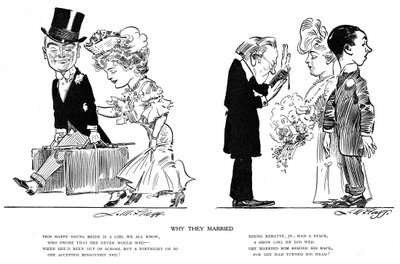
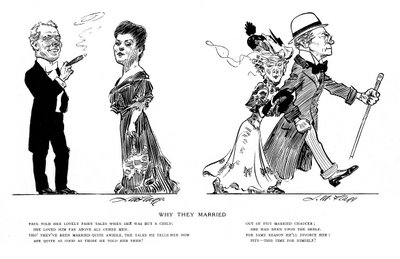
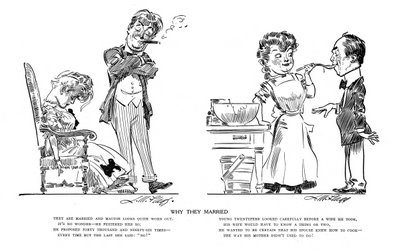
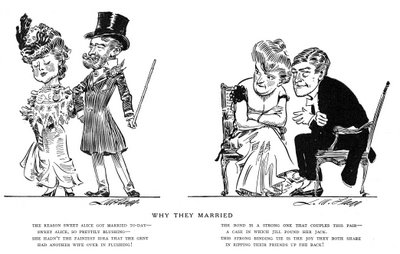
Sunday, October 08, 2006
Life Drawing Sunday XI: E.W. Kemble

Edward Winsor Kemble's drawings began appearing in Life almost from its inception in 1883 and his association with the magazine continued into the 1920s. His drawings caught the attention of Mark Twain and brought him the work for which he is probably best known today, illustrating The Adventures of Huckleberry Finn, the first of several collaborations between the two.
It's easy to guess at what Twain might have found so appealing in Kemble's drawings. His characters were alive, animated and full of expression. He made funny drawings, which was not often the case in Life's cartoons or 19th century cartoons generally. He was one of a very few of Life's contributors (F.P.W. "Chip" Bellew was another) to use sequential panels, often laid out across a couple of pages. (The examples here have been re-arranged in a more conventional comic strip format for easier readability. You're welcome.)
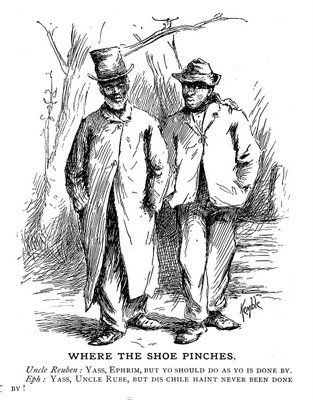 |
Kemble used a variety of ethnic types in his cartoons, which was not uncommon in the WASPy pages of Life or in other forms of 19th and early 20th century entertainment. His most popular work in his time, for Life and other magazines such as Century and Colliers, were his cartoons of contemporary Negro life.The World Encyclopedia of Cartoons described these drawings as "often sympathetic" which may seem, looking at some of the few examples here, an elastic use of the word. It goes on to say that "[w]hile his treatments were usually comic, Kemble took care to study the real urban and rural environments and living conditions of blacks. His caricatures were never absurdly exaggerated, although every convention - wild dress, chicken stealing, etc. - was thematically exploited to the fullest."
Possibly because these drawings were so popular, Kemble may have felt a commercial need to use black characters in situations that make the choice seem arbitrary (.pdf file). In these drawings - and I haven't found a lot of them - he seems to have stumbled into some kind of cartooning ideal where ethnicity doesn't imply or symbolize anything except humanity. If Kemble did this consciously, which doesn't seem all that likely, he would have been way ahead of his time, and ours.


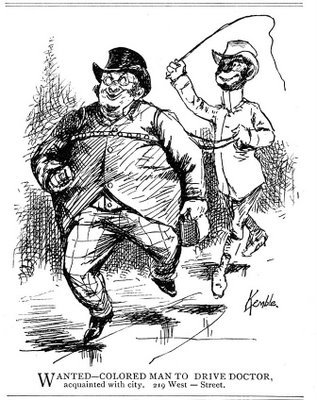
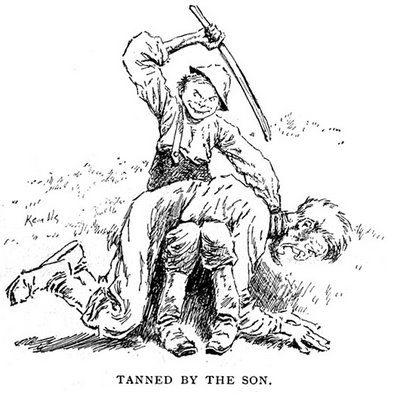
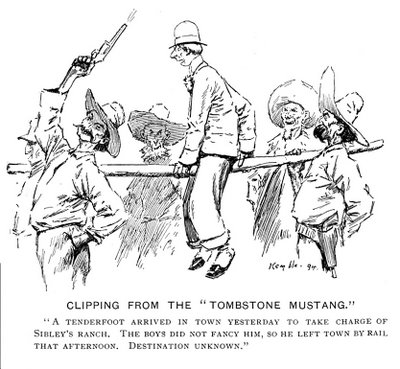





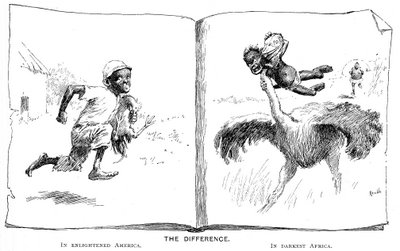
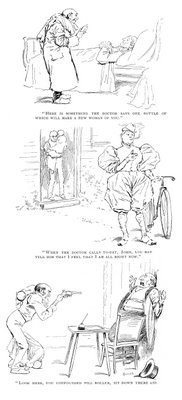
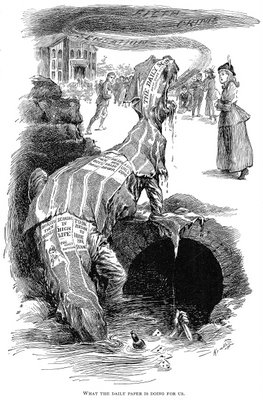



UPDATE (10/15/06): All of Kemble's Huck Finn illustrations can be viewed here. Don't miss the obscenely defaced sales prospectus illustration and the revelation of its existence by The New York World. Thanks to Tom Mazzocco for the links.
Subscribe to:
Comments (Atom)
